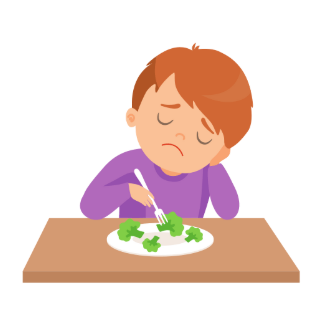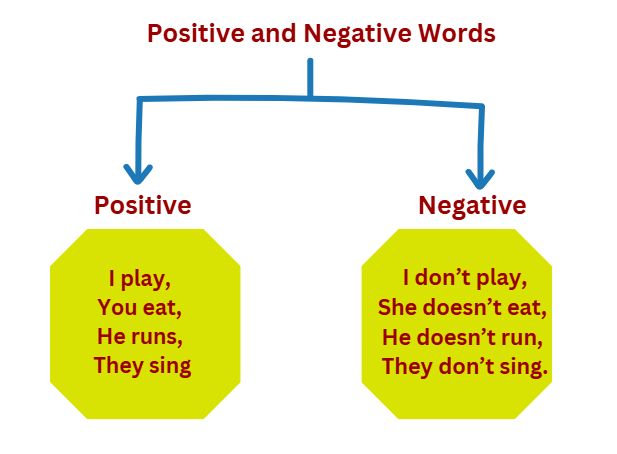Simple Present Tense
Introduction
Definition:
The Simple Present Tense is used to talk about things that happen regularly, always, or facts.
When do we use it?
-
Actions that happen regularly (e.g., every day, every week).
-
Facts or things that are always true (e.g., "The sun rises in the east").
-
Habits or routines (e.g., "I brush my teeth every morning").

Fun Example:
“I eat pizza every Friday!”
-
eat is the action, & "every Friday" tells us it happens regularly.
The dog barks loudly every morning.
-
(The dog has a habit of barking at the same time every day!)
I always eat ice cream after school.
-
(Because who doesn’t love a sweet treat after a long day?)
My cat sleeps on my bed all day long.
-
(Cats are the champions of napping!)
He dances like nobody is watching!
-
(Maybe he’s got some secret dance moves!)
Activity:
-
Show pictures of different routines (e.g., brushing teeth, playing sports) and ask, “What does he/she do every day?”
Read the story below & try to understand simple present tense:
The Busy Day of Timmy the Tiger
Timmy the tiger lives in a big forest. Every morning, he wakes up early. He eats a breakfast of big fruit. After breakfast, he plays with his friends. He runs so fast and jumps so high. Timmy loves to play with his friend, Leo the lion. They climb trees & laugh all day. In the afternoon, Timmy takes a nap in the sun. After the siesta, he wakes up & gets a sip of water from the river. At night, Timmy sings a song before going to sleep

Using the Simple Present Tense
Formation of the Simple Present Tense:
-
Most verbs: subject + base verb (e.g., I play, they run, & we swim).
-
For he, she, or it, add -s or -es to the verb (e.g., she plays, he runs, it sleeps).
-
Negative sentences will contain don't or doesn't: I don't play, she doesn't run.
Fun Example:
-
"She read books every day!"
(Notice the -s at the end of "reads.")

-
"I don’t like broccoli!"
(A fun way to show a negative sentence.)

Activity:
-
Give students a set of subjects (I, she, we) and verbs (play, jump, eat). They need to create sentences.
Positive and Negative Sentences
-
Positive Sentences: I play, You eat, He runs, They sing.
-
Negative Sentences: I don’t play, She doesn’t eat, He doesn’t run, They don’t sing.
-
Remember: For he, she, and it, use doesn’t in the negative (not don’t).

Positive Sentences
These are regular statements that show something happening or being true.
-
I play soccer with my friends after school.
-
You eat a sandwich for lunch every day.
-
He runs fast during the race.
-
They sing songs at the school talent show.
Negative Sentences
To make a negative sentence in the Simple Present Tense, we use don’t (do not) or doesn’t (does not) before the base form of the verb.
-
I don’t play video games on weekdays.
-
She doesn’t eat vegetables, but she loves fruit.
-
He doesn’t run in the morning because he’s still tired.
-
They don’t sing in the choir this year.
Fun Example:
-
“I don’t go to bed early.”
-
“My cat doesn’t like water.”
Activity:
-
Have students change positive sentences to negative ones: “I eat pizza” → “I don’t eat pizza.”
Additional Key Points:
1) Habitual Tense (Talking About Regular Actions or Habits)
The Simple Present Tense is referred to as the habitual tense because it is often used whenever regular actions or habits that are repetitive in nature take place, like things you do every day, every week, or just often in your routine.
For example, you might say:
-
"I eat breakfast at seven o'clock every morning."
(This is something you do every day; it is hence in the Simple Present.)
-
"She walks to school every morning."
(This is recounted as a typical event done.)
The Simple Present Tense ideal for daily habits & things one does as a part of his/her routine. As if this is what I do on a regular basis!"
2) It Doesn't Change for "I," "You," and "We"
In the Simple Present, we notice that the form of the verb remains in its base form & doesn't change rather sharply with these subjects, namely, I, you, and we. This sustains a very simple way to build sentences with these kinds of subjects. You do really need to worry about tricky little changes.
-
Examples:
-
"I play basketball every weekend."
(The verb "play" stays the same. You don’t need to change it when the subject is I.) -
"You study English every day."
(The verb "study" doesn't change for you.) -
"We go to the park after school."
("Go" here is in base form for we)
You see, with "I," "you," or "we," the verb remains super simple, and you don't need to worry about any kind of change there.
3) It's the "Truth-Telling" Tense! (For Facts or Things Which Always Hold Good)
The Simple Present Tense is also applied when stating facts or things which always hold good. They are things that remain constant over a period of time. They never change, irrespective of when you state them. They are always true.
For example:
-
"The Earth revolves around the Sun."
(This is a definite fact, & hence we use the simple present.) -
"Water boils at 100°C."
(It is always this way, scientifically speaking.) -
"Cats sleep several hours a day."
(It is always like this about cats.)
You would use the Simple Present for something that is always true, or a fact or truth, similar to routine occurrences. It is like saying, "This will never change!"
4) But Watch Out for “He/She/It” – It Needs an “S”
If the sentence subject is he, she, or it (all of these are singular subjects), then you will need to put an -s at the end of the verb. It is a small but helpful rule for the simple present tense.
For example:
-
"She plays soccer on the weekends."
(Observe the -s at the end of "plays" because the subject is she.) -
"He runs in the park every morning."
(Here, you add -s to "run" to get "runs" since the subject is he.) -
"It rains a lot in the spring."
(For "it," you add -s with "rain" to get "rains.")
This is a rule whenever you speak about he, she, or it. So, the verb always receives an -s (or -es in certain instances) to agree with these singular subjects.
Conclusion:
The Simple Present Tense is essential for describing actions that happen regularly, facts, or routines. By mastering its structure & usage, you can communicate regular activities, state universal truths, & discuss everyday habits effectively. Whether it’s talking about what you do every day, what’s always true, or even what your friends like to do, the Simple Present Tense will be your go-to tool for expressing these ideas!
Fill in the Blanks (Simple Present Tense)
-
She ________ (plays) the piano every day.
-
They ________ (like) to go swimming in the summer.
-
I ________ (not, eat) ice cream in the winter.
-
He ________ (runs) in the park every morning.
-
We ________ (study) English every Monday.
CBSE Schools In Popular Cities
- CBSE Schools in Bangalore
- CBSE Schools in Mumbai
- CBSE Schools in Pune
- CBSE Schools in Hyderabad
- CBSE Schools in Chennai
- CBSE Schools in Gurgaon
- CBSE Schools in Kolkata
- CBSE Schools in Indore
- CBSE Schools in Sonipat
- CBSE Schools in Delhi
- CBSE Schools in Rohtak
- CBSE Schools in Bhopal
- CBSE Schools in Aurangabad
- CBSE Schools in Jabalpur
- CBSE Schools in Jaipur
- CBSE Schools in Jodhpur
- CBSE Schools in Nagpur
- CBSE Schools in Ahmednagar
- CBSE School In Tumkur













